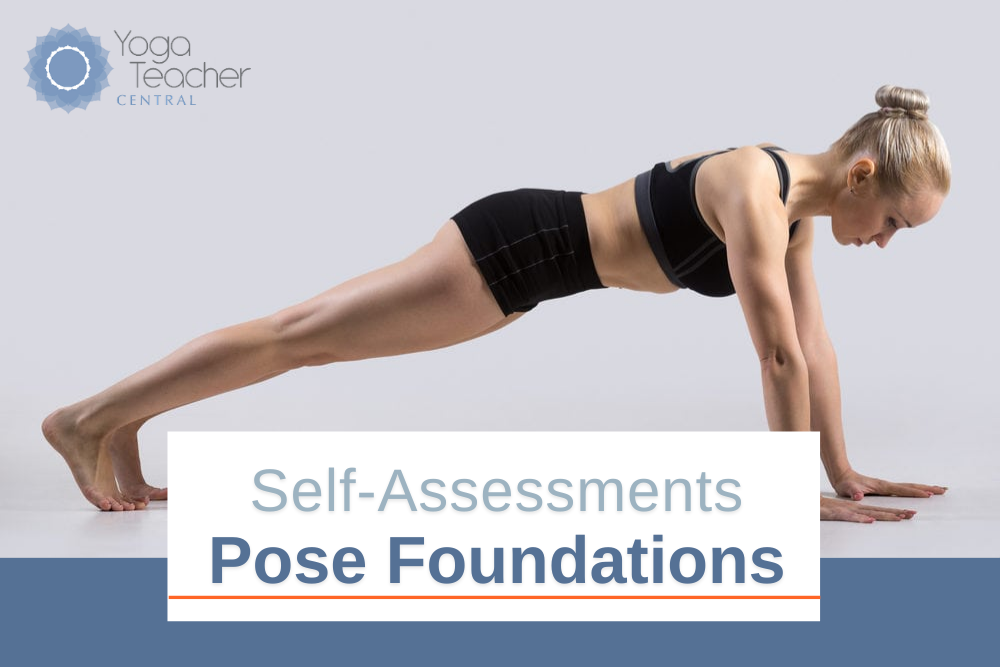
Introduction
Quickly assess your knowledge of Pose Foundations, and identify gaps in your education. See below for assessments on these subjects:
- Standing Poses
- Surya Namaskar
- Balancing Poses
- Core Strengthening Poses
- Arm Balancing Poses
- Backbending Poses
- Forward Bends & Hip Stretching Poses
- Twisting Poses
- Inversion Poses
- Meditation Seats
- Restorative Yoga
- Yin Yoga
Purpose
Offer a series of free quizzes for yoga teachers to:
- Provide an effective way to assess knowledge of each of the Teaching Knowledge Standards.
- Make it easy to self-assess privately, on your own time.
- Help teachers who identify educational gaps to bolster their knowledge with accessible and practical lessons.
More Self-Assessments
For more self-assessments, see the Standards & Self-Assessment Hub.
Standing Poses
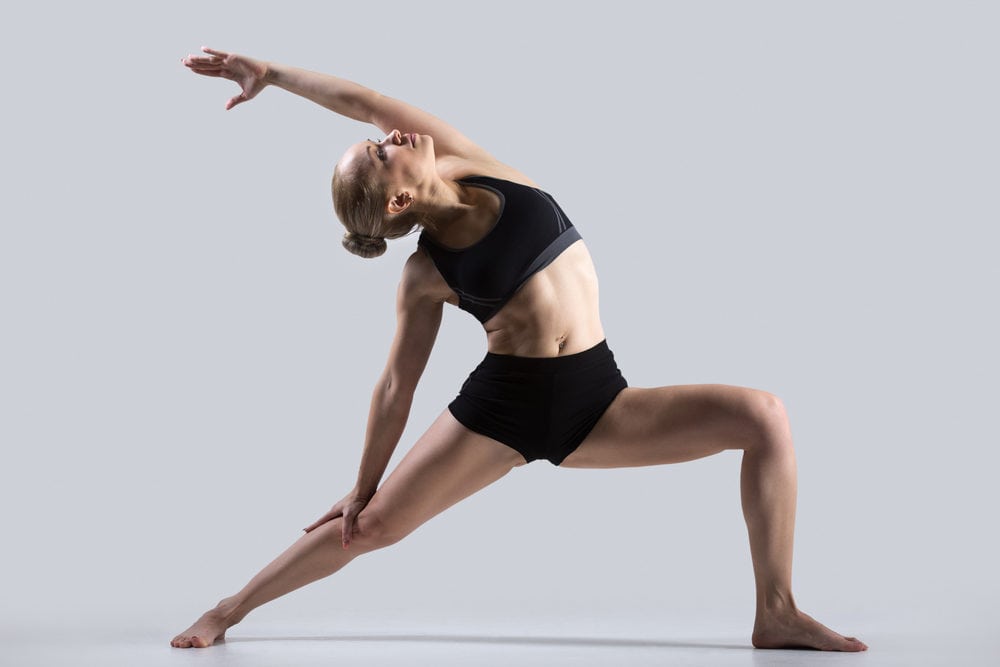
Teaching Standard
Be proficient in the nature and effects of standing poses, and considerations for wisely teaching and sequencing them.
Assessment
Vocabulary Mix-and-Match
| PRASARITA PADOTTANASANA |
| |
Wide Legged Standing Forward Bend |
| ARDHA CHANDRASANA |
| |
Downward Facing Dog Pose |
| UTTHITA TRIKONASANA |
| |
Extended Side Angle Pose |
| PARIVRTTA TRIKONASANA |
| |
Mountain Pose |
| VIRABHADRASANA |
| |
Revolved Triangle Pose |
| TADASANA |
| |
Revolved Side Angle Pose |
| UTTANASANA |
| |
Half Standing Forward Bend / Half Way Lift |
| ADHO MUKHA SVANASANA |
| |
Hand to Foot Pose / Gorilla |
| PADAHASTASANA |
| |
Warrior Pose |
| URDHVA HASTASANA |
| |
Half Moon Pose |
| PARSVOTTANASANA |
| |
Hand to Big Toe Pose |
| PARIVRTTA PARSVAKONASANA |
| |
Intense Side Stretch Posture / Pyramid Pose |
| UTTHITA PARSVAKONASANA |
| |
Intense Stretching Posture / Standing Forward Bend |
| PADANGUSTHASANA |
| |
Extended Triangle Pose |
| UTKATASANA |
| |
Fierce / Chair Pose |
| ARDHA UTTANASANA |
| |
Upward Salute |
Questions
- What are the general physical effects of standing poses?
- What are the energetic effects?
- Why are standing poses good preparation for every other type of pose?
- What is meant by the phrase “root to rise?”
- What caution does Bernie Clark offer regarding the teaching of foot placement?
- What are some considerations for encouraging an individualized and balanced approach to stability and fluidity in standing poses?
- Describe how you might sequence within the category of standing poses.
- How might you sequence standing poses that have an internal rotation of femurs vs those that have an external rotation of femurs?
- What sequencing cautions are associated with asymmetrical standing poses?
Surya Namaskar
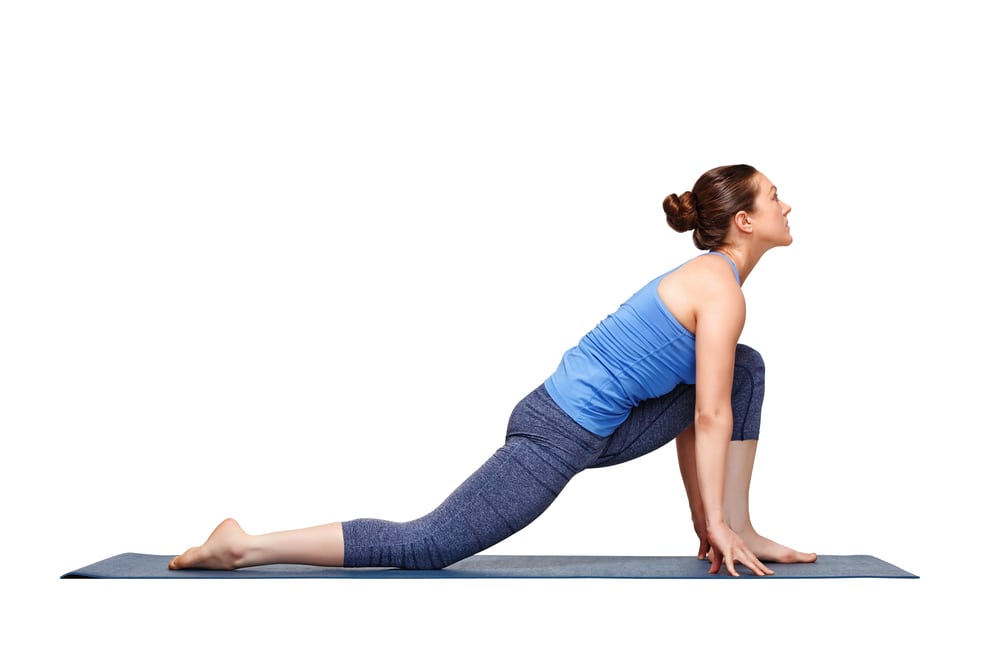
Teaching Standard
Be knowledgeable about the poses and flows, and review detailed teaching considerations.
Assessment
Vocabulary Mix-and-Match
| “NAMAS” |
| |
To place in a special way |
| “NAMASKAR” |
| |
Greeting of honor and respect to the divinity present in all |
| “SURYA” |
| |
To bow to or adore |
| “SURYA NAMASKAR” |
| |
Wise progression or placement |
| “VINYASA” |
| |
A series of postures and transitions, each accompanied by a particular phase of the breath |
| “VINYASA KRAMA” |
| |
Sun Salutation |
| VINYASA YOGA or VINYASA FLOW YOGA |
| |
A style of yoga based on a flowing sequence of poses coordinated with the breath |
| VINYASAS |
| |
Sun |
Questions
- What is Surya Namaskar?
- Describe the symbolic associations with Surya Namaskar.
- What are the three primary forms of Surya Namaskar?
- How are vinyasas and Vinyasa Yoga related to Surya Namaskar?
- For what reasons is Surya Namaskar considered a full practice on its own?
- What energy-related benefits are said to arise from practicing Surya Namaskar?
Balancing Poses
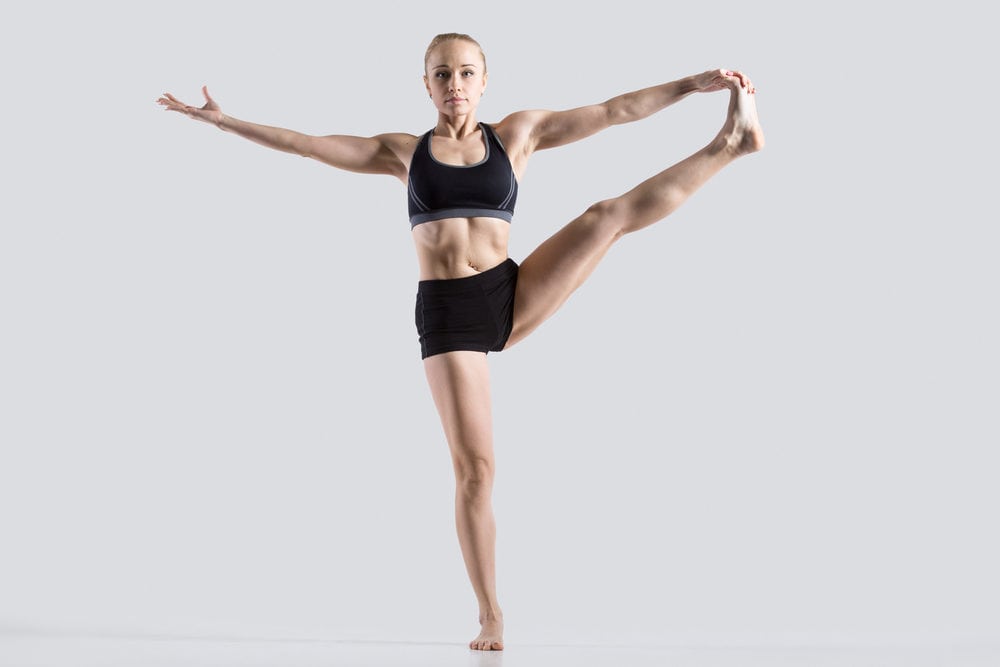
Teaching Standard
Be proficient in the nature and effects of balancing poses, and considerations for wisely teaching and sequencing them.
Assessment
Vocabulary Mix & Match
| ANANTASANA |
| |
One Legged Garland Pose |
| BALANCING POSES |
| |
Tree Pose |
| ARDHA BADDHA PADMOTTANASANA |
| |
Vishnu’s Pose / Side Reclining Leg Lift |
| ARDHA CHANDRASANA |
| |
Revolved Hand to Toe Pose |
| ARDHA NAVASANA |
| |
Warrior 3 Pose |
| EKA PADA MALASANA |
| |
Half Bound Lotus Standing Stretch |
| GARUDASANA |
| |
Boat Pose |
| NATARAJASANA |
| |
Remove an element of support to strengthen and stabilize the body and mind |
| NAVASANA |
| |
Balancing Stick Pose |
| PARIVRTTA ARDHA CHANDRASANA |
| |
Eagle Pose |
| PARIVRTTA HASTA PADANGUSTHASANA |
| |
Half Moon Pose |
| SVARGA DVIJASANA |
| |
Extended Hand to Toe Pose |
| UBHAYA PADANGUSTHASANA |
| |
Lord of the Dance |
| URDHVA MUKHA PASCHIMOTTANASANA |
| |
Upward Facing Forward Bend |
| UTTHITA HASTA PADANGUSTHASANA |
| |
Revolved Half Moon Pose |
| VIRABHADRASANA III |
| |
Bird of Paradise Pose |
| VRKSASANA |
| |
Half Boat Pose |
Questions
- What is the purpose of practicing balance poses?
- Describe five types of balance poses and provide examples for each.
- What are the general physical effects of balance poses?
- What are the energetic effect of balance poses?
- Name three essentials related to the practice of balancing.
- What is drishti and why does it help in balancing?
- Aside from drishti, what else can support focus and attention during balance practice?
- Describe some teaching tips to help students manage their thoughts and attitude related to balancing practice.
- If a student has trouble balancing, what are some options?
- Describe up to five ways to add challenge to a balancing practice.
- Describe general considerations related to sequencing balancing poses.
- Provide sequencing considerations related to preparing for balance poses.
Core Strengthening Poses
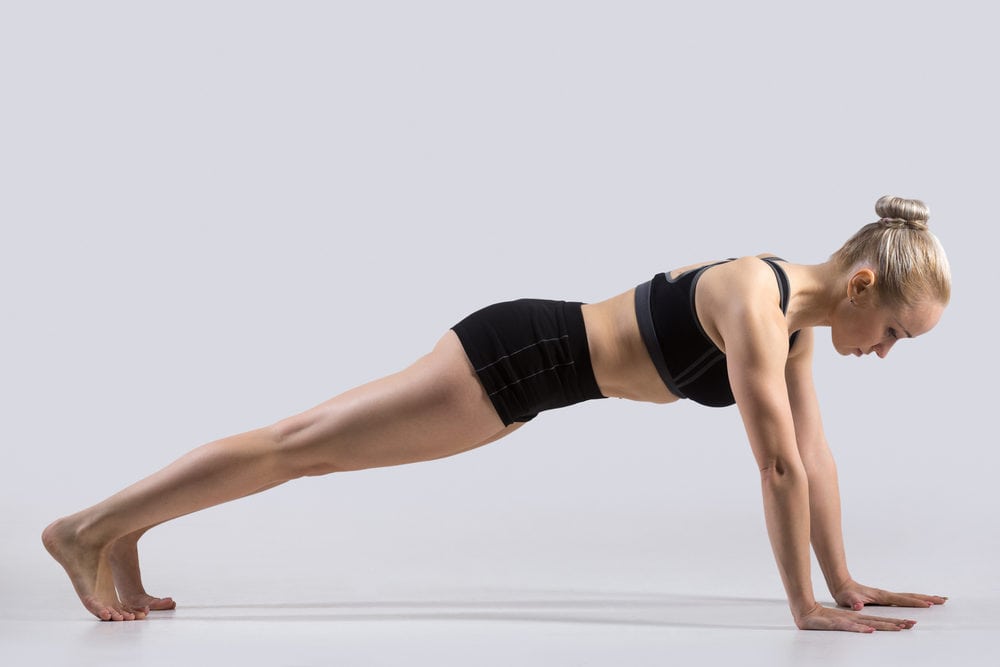
Teaching Standard
Be proficient in the function and benefits of core strengthening poses, effective cueing for core engagement, and ways to promote a balanced approach to core health.
Assessment
- How is true core strengthening different from how popular culture promotes strong abdominals?
- What benefits are associated with healthy core strengthening?
- What is a common way that people compensate for weak abdominals?
- How might a weak transversus abdominis (TA) impact the psoas in some core work?
- What potential emotional ramifications might there be for some students engaged in core work?
- Describe potential problems with how students may respond to the phrase, “engage your core.”
- A balanced approach to core health includes utilizing the abdominals as stabilizers (not prime movers). What are some examples of poses that use the abdominals as stabilizers?
- For what specific anatomical reason are sit-ups and crunches not the optimal core strengthening exercise for many people?
- Give examples of ways to cue core engagement.
- What type of movement is needed to bring balance after core strengthening work?
Arm Balancing Poses
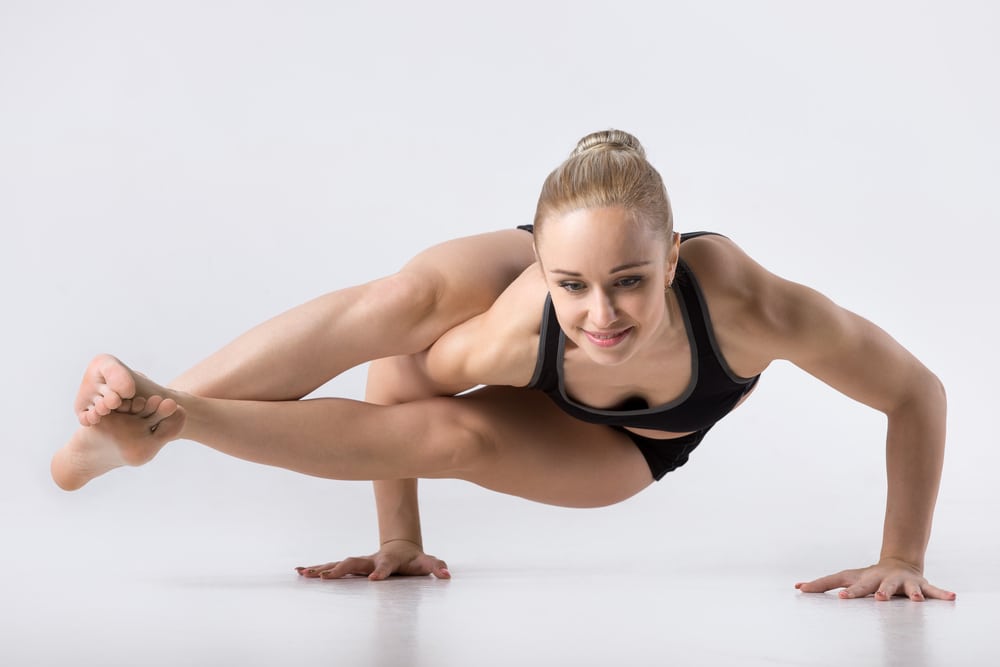
Teaching Standard
Be proficient in the nature and effects of arm balancing poses, and considerations for wisely teaching and sequencing them.
Assessment
Vocabulary Mix-and-Match
| ARM BALANCING POSES |
| |
Eight Angle Pose |
| CAMATKARASANA |
| |
Weight of the body is balanced upon one or both hands or forearms |
| EKA PADA BAKASANA |
| |
Leg Over Shoulder Pose |
| MAYURASANA |
| |
Cock / Rooster Pose |
| VRSCHIKASANA |
| |
Wild Thing |
| ADHO MUKHA VRKSASANA |
| |
Arm Pressure Pose |
| ASTAVAKRASANA |
| |
Flying Warrior |
| BAKASANA |
| |
Peacock Feather Pose / Forearm Balance |
| BHUJAPIDASANA |
| |
Crow Pose |
| DWI PADA KOUNDINYASANA |
| |
Two Legged Koudinya’s Pose |
| EKA HASTA BHUJASANA |
| |
Peacock Pose |
| EKA PADA GALAVASANA |
| |
One Legged Crane Pose / Flying Crow |
| EKA PADA KOUNDINYASANA II |
| |
Flying Splits |
| KAKASANA |
| |
Scorpion Pose |
| KUKKUTASANA |
| |
Flying Pigeon |
| LOLASANA |
| |
Side Crane/Crow Pose |
| PARSVA BAKASANA |
| |
Scale Pose |
| PINCHA MAYURASANA |
| |
Side Plank |
| TITTIBHASANA |
| |
Pendant Pose |
| TOLASANA |
| |
Handstand / Downward Facing Tree Pose |
| VISVAMITRASANA |
| |
Firefly Pose |
| VASISTHASANA |
| |
Crane Pose |
Questions
- Describe three types of arm balances and the associated effect on the shoulder joint.
- Provide practice guidelines for bearing weight on the hands.
- Practice form and teaching considerations for balance poses in general apply to arm balancing. Provide some additional considerations.
- What poses may serve as alternatives or preparation for arm balancing?
Backbending Poses
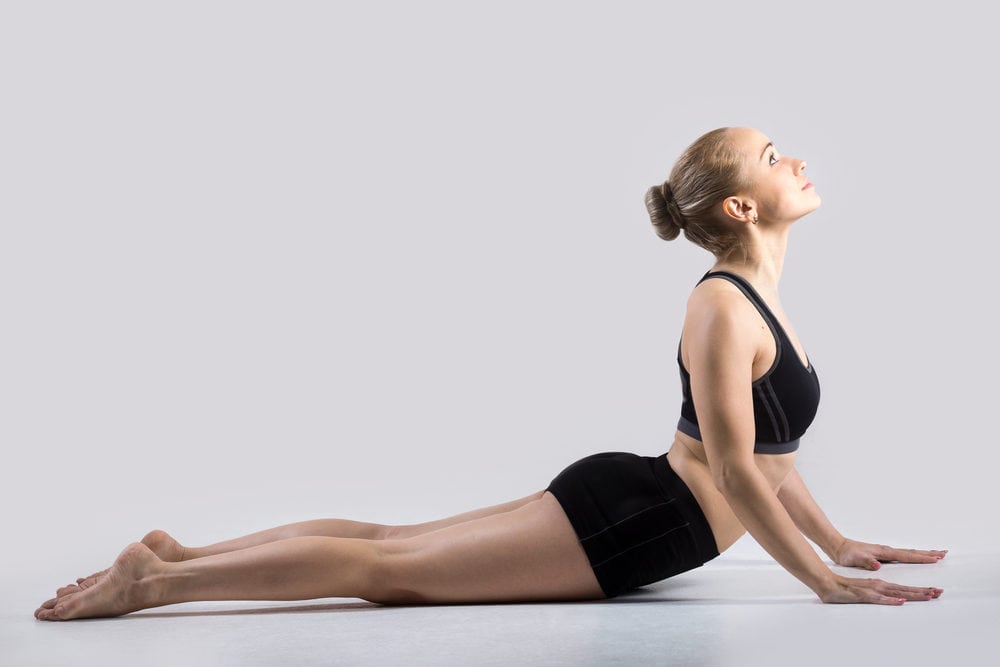
Teaching Standard
Be proficient in the nature and effects of backbending poses, and considerations for wisely teaching and sequencing them.
Assessment
Vocabulary Mix-and-Match
| SALABHASANA |
| |
Upward Bow / Wheel Pose |
| ANAHATASANA |
| |
Locust Pose |
| NATARAJASANA |
| |
Bridge Pose |
| BHEKASANA |
| |
Frog Pose |
| DHANURASANA |
| |
Low Lunge |
| USTRASANA |
| |
One Legged King Pigeon Pose |
| URDHVA DHANURASANA |
| |
Upward Facing Dog Pose |
| BHUJANGASANA |
| |
Camel Pose |
| EKA PADA RAJAKAPOTASANA |
| |
Cobra Pose |
| MATSYASANA |
| |
Lord of the Dance Pose |
| SETU BANDHASANA |
| |
Fish Pose |
| URDHVA MUKHA SVANASANA |
| |
Bow Pose |
| ANJANEYASANA |
| |
Melting Heart Pose / Extended Puppy Pose |
Questions
- What is the primary effect of backbends?
- What is the secondary effect that is experienced in active backbends?
- What is meant by the anatomical term extension? What is meant by spinal extension in yoga?
- Name four categories of backbends and the actions that characterize them. Give an example of each.
- What are the general physical effects of backbends?
- What are the energetic effects?
- What is “nutation?” What is “counternutation?”
- Should the sacrum be in nutation or counternutation during backbending?
- In what case might students likely benefit from contracting the glutes in backbending? In what case is it usually best to relax the glutes?
- Describe low body engagement and alignment practices to support healthy backbending.
- What are the objectives in sequencing to prepare for deep backbends?
- How are categories of backbends sequenced in relation to one another?
- What is recommended immediately after backbending and before cooling down?
- What types of poses should be avoided after active backbending?
Forward Bends & Hip Stretching Poses
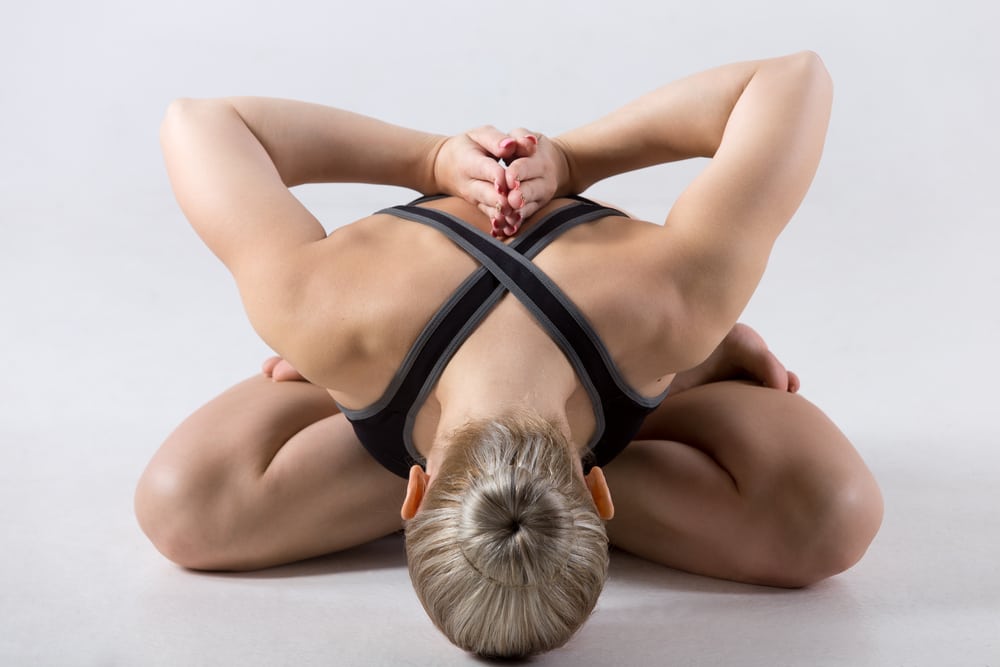
Teaching Standard
Be proficient in the nature and effects of forward bending poses, and considerations for wisely teaching and sequencing them.
Assessment
Vocabulary Mix-and-Match
| SUPTA PADANGUSTHASANA |
| |
Fire Log Pose / Double Pigeon / Square Pose |
| YOGANIDRASANA |
| |
Intense Stretch of the West / Seated Forward Bend |
| UPAVISTHA KONASANA |
| |
Yogic Sleep Pose |
| JANU SIRSASANA |
| |
Wind-Relieving Pose / Knees to Chest |
| AGNISTHAMBHASANA |
| |
Bound Angle / Cobblers Pose |
| PARIVRTTA JANU SIRSASANA |
| |
Seated Angle Pose |
| TIRIANG MUKHA EKA PADA PASCHIMOTTANASNA |
| |
Revolved Head to Knee Pose |
| PASCHIMOTTANASANA |
| |
Head to Knee Pose |
| APANASANA |
| |
Three-Limbed Forward Bend |
| BALASANA |
| |
Child’s Pose |
| BADDHA KONASANA |
| |
Reclined Hand to Toe Pose |
Questions
- What is forward bending?
- What is a common effect of all types of forward bends?
- What is the anatomical term for forward bending?
- Name four types of forward bends. Explain the effect and provide examples for each.
- For what conditions are forward bends contraindicated?
- What are the general physical effects of forward bends?
- What are the energetic effects of forward bends?
- What is meant by the terms “anterior tilt” and “posterior tilt” of the pelvis?
- Describe a generally advisable alignment practice for forward bending, in terms of anterior and posterior tilt of the pelvis.
- Give two examples of ways to direct students that will encourage a balance of effort and ease in forward bending.
- How can you use Dandasana (Staff Pose) to learn about an individual student and advise them in forward bending?
- Name some forward bending poses that are safest for tight hamstrings and/or back issues such as disk injuries.
- How can moving into Uttanasana (Standing Forward Bend) with a “swan dive” be risky for flexible practitioners?
- How can you sequence to prepare for deep forward bends?
- What counterposes are recommended after forward bending?
- The Viniyoga tradition calls forward bends the “hub of the wheel” in sequencing. What is meant by this?
Twisting Poses
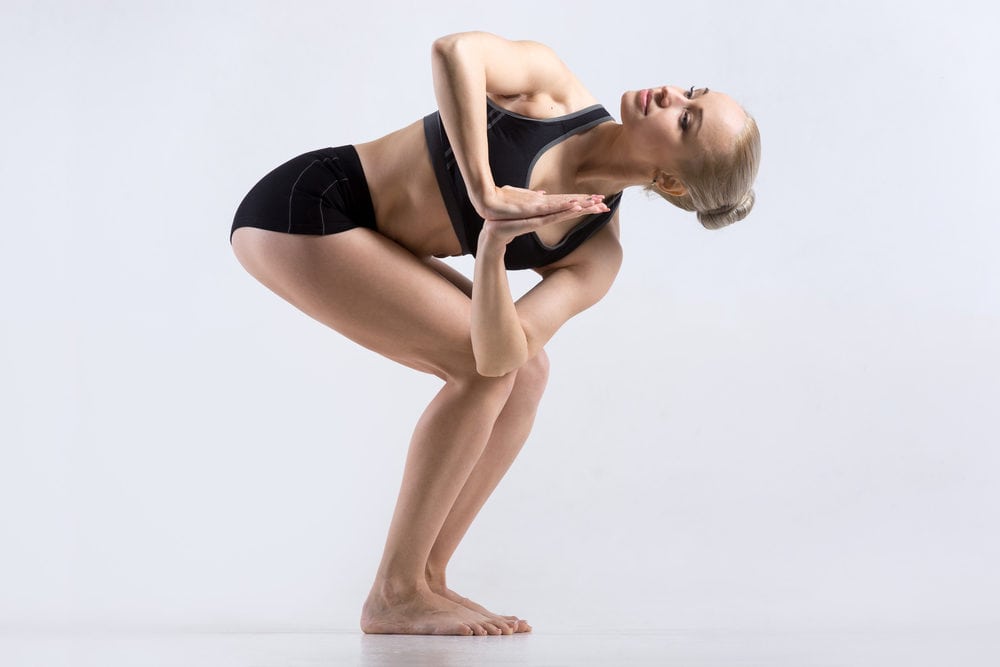
Teaching Standard
Be proficient in the nature and effects of twisting poses, and considerations for wisely teaching and sequencing them.
Assessment
Vocabulary Mix-and-Match
| JATHARA PARIVARTANASANA |
| |
Half Lord of the Fishes Pose |
| ARDHA MATSYENDARASANA |
| |
Bharadvaja’s Pose / Sage Twist |
| PARIVRTTA PARSVAKONASANA |
| |
Revolved Abdomen Pose |
| PARIVRTTA TRIKONASANA |
| |
Marici’s Pose |
| PARIVRTTA JANU SIRSASANA |
| |
Revolved Half Moon Pose |
| MARICHYASANA |
| |
Revolved Head to Knee Pose |
| PARIVRTTA ARDHA CHANDRASANA |
| |
Revolved Side Angle Pose |
| BHARADVAJASANA |
| |
Revolved Triangle Pose |
Questions
- What is spinal twisting and why do we practice twists?
- Name five types of twists and give examples for each.
- What are the general physical effects of twists?
- What are the energetic effects of twists?
- For what condition are twists contraindicated?
- Why is twisting one of the major culprits in sacroiliac (SI) joint pain?
- How do experts recommend practicing twists in order to keep SI joints safe?
- For what reasons do we keep the spine long while twisting?
- Describe breath-related teachings to accompany twisting practice.
- Describe common tendencies for over- and under-working parts of the spine during twists.
- Provide sequencing considerations when preparing for twists.
- How might you counter a strong twisting sequence?
Inversion Poses
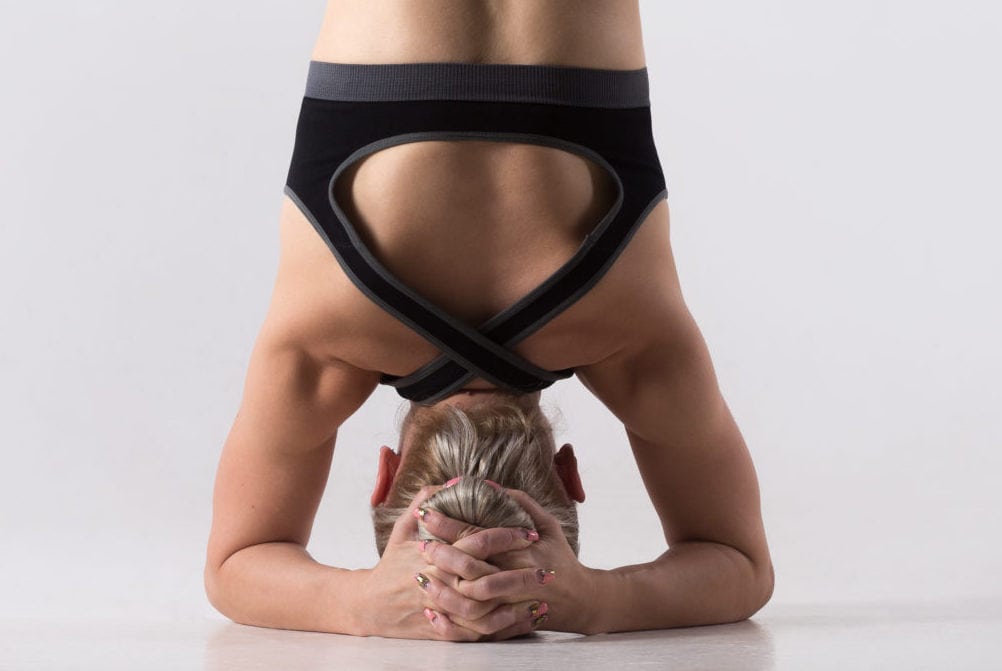
Teaching Standard
Be proficient in the nature and effects of inversion poses, and considerations for wisely teaching and sequencing them.
Assessment
Vocabulary Mix & Match
| CLASSIC INVERSIONS |
| |
Twisted Plow Pose |
| FULL INVERSIONS |
| |
Handstand / Downward Facing Tree Pose |
| INVERISON POSES |
| |
Invert the body’s relationship to space and gravity |
| INVERT |
| |
Half Shoulder Stand |
| MILD / PARTIAL / HALF INVERSIONS |
| |
Legs Up the Wall |
| ADHO MUKHA SVANASANA |
| |
Headstand and Shoulderstand |
| ADHO MUKHA VRKSASANA |
| |
Downward Facing Dog Pose |
| ARDHA HALASANA |
| |
Poses in which the heart is higher than the head while also the pelvis, legs and feet are higher than the heart |
| ARDHA PINCHA MAYURASANA |
| |
Headstand |
| ARDHA SARVANGASANA |
| |
Bound Hands Headstand Posture |
| BADDHA HASTA SIRSASANA A |
| |
Half Peacock Feather Pose |
| HALASANA |
| |
To “invert” means to turn upside down |
| KARNAPIDASANA |
| |
Shoulderstand |
| PARSVA HALASANA |
| |
Half Plow Pose |
| SARVANGASANA |
| |
Ear Pressure Pose |
| SIRSASANA |
| |
Poses where the head is below the heart (but legs are not higher than the heart) |
| VIPARITA KARANI |
| |
Plow Pose |
Questions
- What are yoga inversions?
- What is meant by the term “classic inversions”?
- Define “full inversions” and give examples.
- Give examples of poses that are both arm balances and inversions.
- What are some various names that mean the same as “mild inversions?’
- Define “mild inversions” and give examples.
- What is meant by “gentle” or “restorative” inversions?
- For what type of general conditions are inversions of any type contraindicated?
- Describe important cautions related to inversions in general.
- Individual inversion poses will each have their own contraindications and cautions. What is an example of a caution for a specific inversion pose?
- When inversions are not contraindicated but poses such as Headstand and Forearm Balance are not appropriate, what may be safer alternatives?
- What are the general physical effects of inversions?
- What are the energetic effects of inversions?
- What is the yoga philosophy perspective regarding inversions and amrita?
- What are some sequencing considerations when teaching inversions?
Meditation Seats
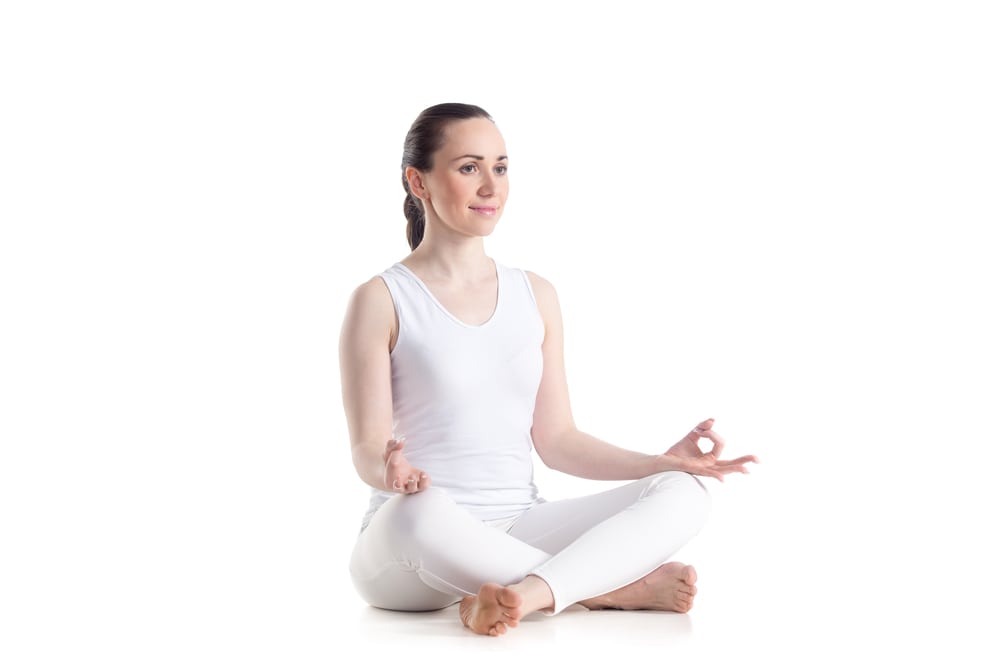
Teaching Standard
Be proficient in foundational teachings for meditation seats, including how to help students achieve spinal and pelvic neutrality.
Assessment
- Define meditation seats.
- Describe priorities for choosing and setting up a well-aligned meditation seat.
- Discuss reasons behind being comfortable and having an aligned spine in meditation seats.
- Provide a number of reasons that many new students slump while practicing seated postures.
- Describe the muscular flexibility and strength required to sit erect in a comfortable, unsupported seat.
- Provide a number of options for finding a meditation seat that maintains the natural curves of the spine.
- You may find that students (especially beginners, who need props the most) avoid propping while in a seat. Explain ways to encourage students to choose propping or a variation that allows for good spinal alignment.
- Name components of the inner body that help to provide the stability and flexibility needed to sit comfortably erect.
- Describe a number of teachings and techniques to help students find pelvic and spinal neutrality in a meditation seat.
- Discuss sequencing related to meditation seats.
Restorative Yoga
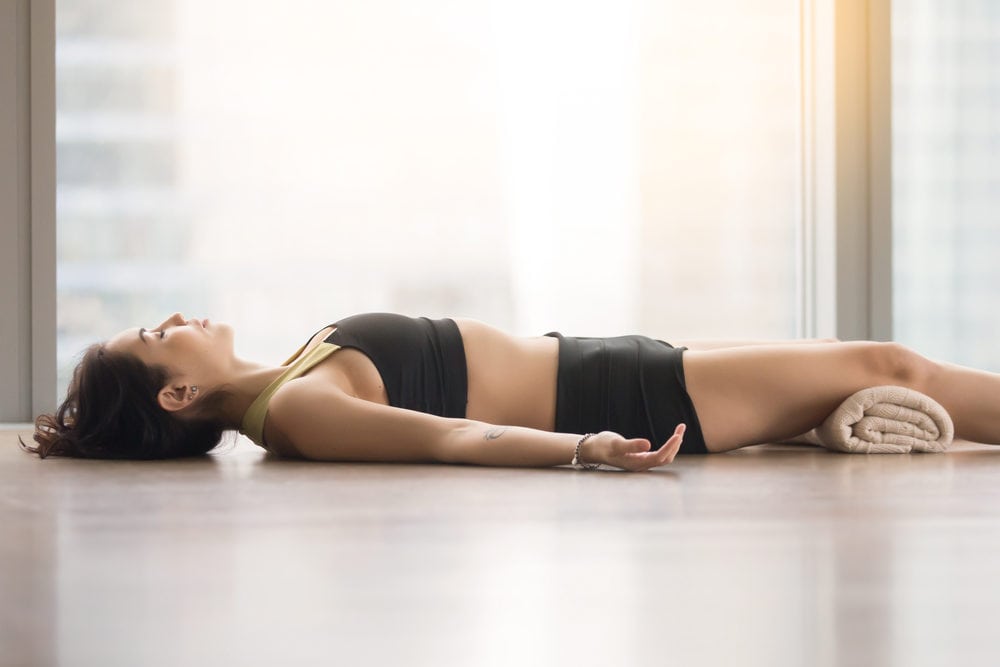
Restorative Yoga Philosophy & Principles
Teaching Standard
Be grounded in the theoretical underpinning of Restorative Yoga including nervous system physiology and conscious relaxation, plus the effects and benefits of Restorative Yoga practice.
Assessment
- What is the primary purpose of practicing Savasana at the end of practice?
- What additional opportunities does Savasana provide?
- Explain the intention of Restorative Yoga.
- Discuss the role and challenge of “not doing” that is built into Savasana and Restorative Yoga.
- Discuss the fact that some students will find Savasana and Restorative Yoga to be quite challenging.
Restorative Yoga Teaching Techniques
Teaching Standard
Be prepared to optimize conscious relaxation among students in Restorative Yoga, and to identify and address issues.
Assessment
- Provide seven foundational techniques when teaching Restorative Yoga.
- Provide additional considerations when teaching Restorative Yoga.
- Describe the philosophical and physiological considerations related to coming out of Savasana by rolling onto the right side (or left) side.
- Discuss the particular significance of setting the environment for Restorative Yoga.
- What teaching techniques can help students in their practice of Restorative Yoga?
- Students with unhealed trauma, or experiencing high stress or anxiety, are not likely to experience the benefits of Restorative Yoga (or seated meditation) without added support. Discuss.
- After a few minutes in a restorative pose, students should feel a deepening calm. If they don’t, what might you consider?
- Provide additional examples of situations that call for a different pose or set-up.
- Note some considerations related to sleeping in Restorative Yoga.
- Discuss overstretching as it relates to Restorative Yoga.
- Discuss what to watch out for regarding the practice of long holds in Supta Baddha Konasana.
- Note considerations regarding students’ emotional vulnerability while practicing asana.
Yin Yoga
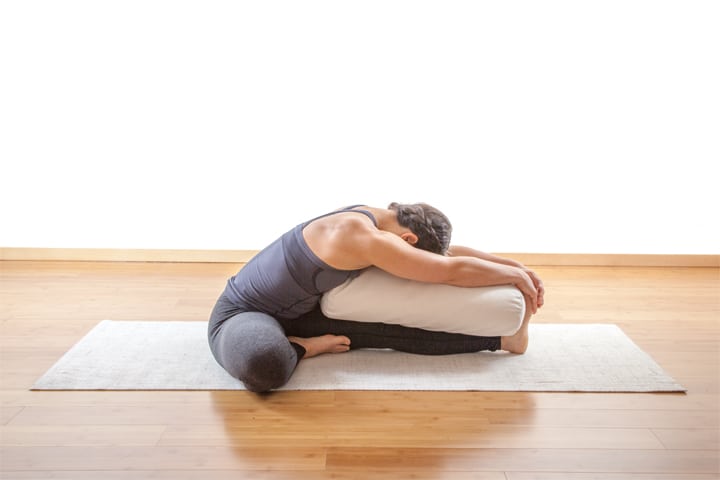
The Polarities of Yin & Yang
Teaching Standard
Gain a basic understanding of the polarities of “yin” and “yang.”
Assessment
- Describe yin and yang as complementary forces.
- How are yin and yang similar to the meaning of Hatha Yoga?
- How can awareness of yin and yang help to resolve dualistic thinking in favor of unity consciousness?
- List 10 or more yin qualities.
- Name 10 or more yang qualities.
Yin Yoga Introduction
Teaching Standard
Be grounded in the theoretical underpinnings of Yin Yoga, particularly how its intention is different from stretching, and principles of practice.
Assessment
- What are two different ways that the word “yin” may be used in the context of yoga?
- How are Yin Yoga and Restorative Yoga similar and different?
- What are two primary differences between Yin Yoga and other styles of yoga?
- Discuss Yin Yoga’s focus on stimulation vs stretch.
- Describe some typical effects of Yin Yoga.
- Describe primary principles of practice for Yin Yoga.
- A significant aspect of teaching and practicing Yin Yoga is how we direct and respond to the mind (and emotions) during the holds. Discuss.
- Discuss considerations regarding the practice of Yin Yoga for very flexible students.
Yin Yoga Poses & Sequences
Teaching Standard
Review distinguishing characteristics of poses practiced in Yin Yoga, and explore common poses and sample sequences.
Assessment
- Poses are not presumed to be distinctly yin or yang. What, then, differentiates a pose as it is practiced in Yin Yoga?
- Why does an image of a yin pose tend to appear the same as its yang counterpart?
- However, what is a potential visible difference in how a pose practiced in a yin vs yang practice?
- Expand on the statement that “20 is plenty!” as it relates to the number of Yin Yoga poses in a practice toolkit.
- Name 20 Yin Yoga poses and provide the name of their yang
- What sequencing element can help prepare students to relax into long-hold poses?
Next Steps
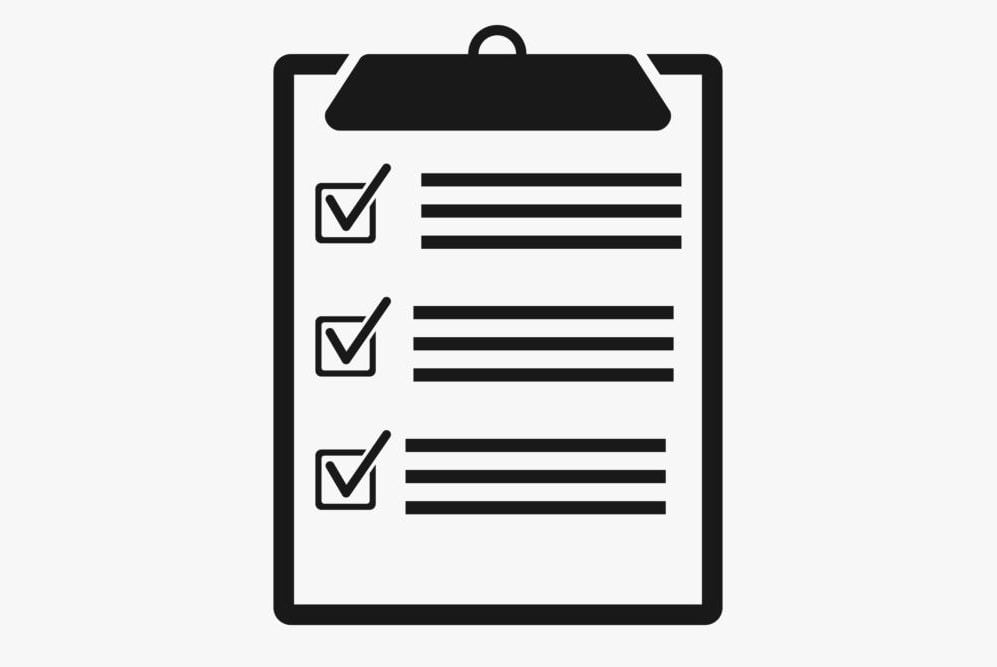
- To view more self-assessments, go to the Standards & Self-Assessment Hub.
- To bolster your knowledge and be recognized as a YTC teacher, enroll in the Yoga Teacher Central Study Program (details below).
- Members, view clear and concise lessons:

In a Nutshell
- The enrollment fee is $25 and is open to Yoga Teacher Central members, past members and non-members.
- Members receive current membership benefits plus additional benefits listed below.
- Enrollment in the Study Program qualifies you for lifetime YTC Teacher status.
Benefits
Enrolling in the Study Program gives you:
- A downloadable Knowledge Standards Lesson Guide to walk you through a structured study path toward certification.
- Selection of 5 downloadable lessons of your choice (from a library of nearly 500).
- Recognition as a YTC Teacher (for life; no expiration).
- Professional marketing kit for highlighting your YTC Teacher status on social media and your website.
- Excellent preparation for taking certification exams.
Members
- Your current membership gives you online access to not only thousands of pages of organized study and teaching knowledge, but also sequence breakdowns and teaching notes, theme plans, injury cheat-sheets, and so on.
- When you enroll in the Study Program, you get these additional benefits: a Knowledge Standards Lesson Guide, selection of 5 downloadable lessons of your choice, and a professional marketing kit for highlighting your YTC Teacher status on social media and your website.

See here for information about exams, badges and certification. Get links for each exam, and for a no-risk trial exam.
We think you’ll enjoy taking the exams. The questions are well-thought-out and the subject matter is quite engaging and significant for teachers. You’ll get an inspiring teaching after answering each question. At the end of the exam, you see a summary of wrong answers and the relevant teachings, giving you a personal study guide targeted to your needs.
This is an hour well-spent!
















